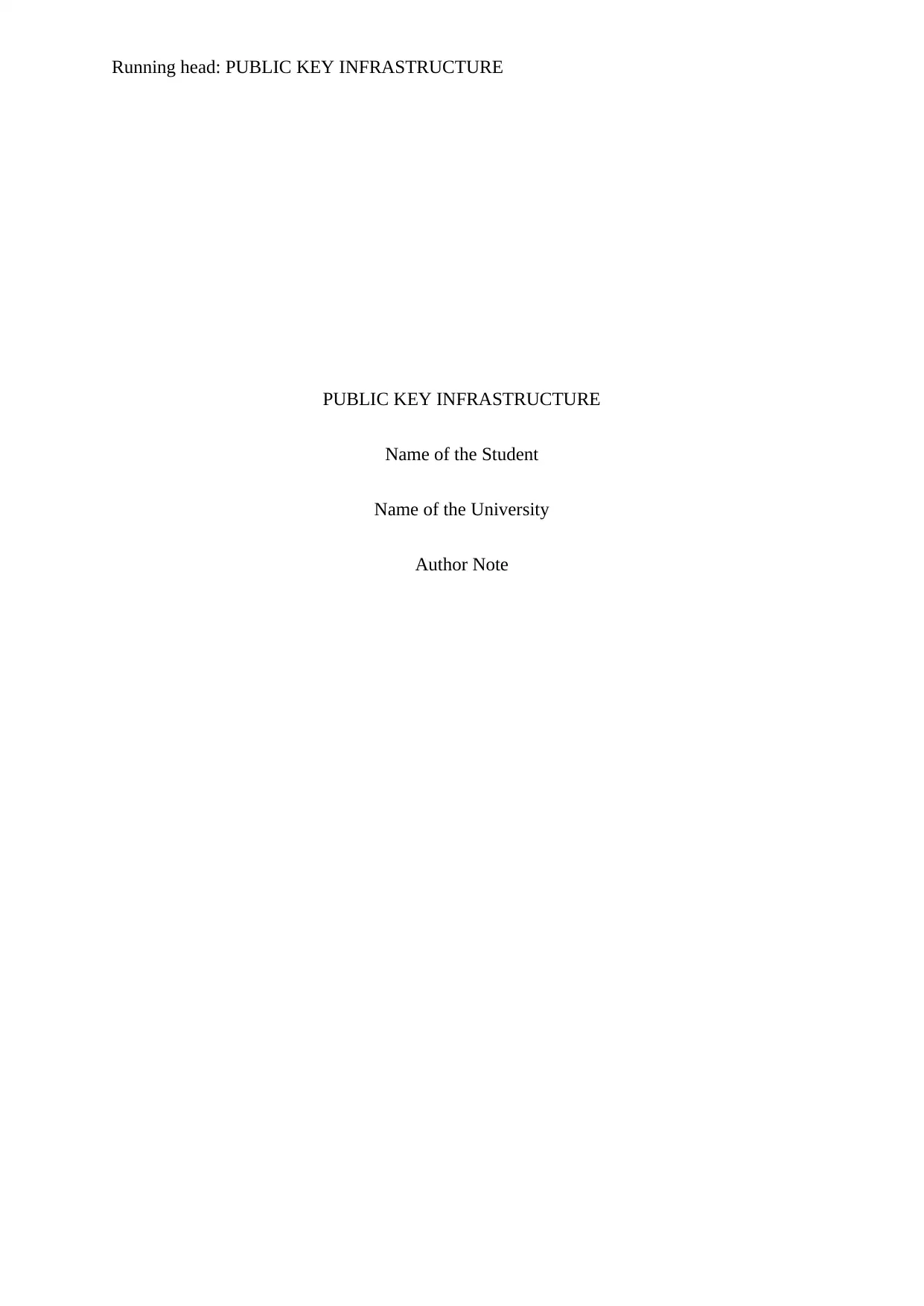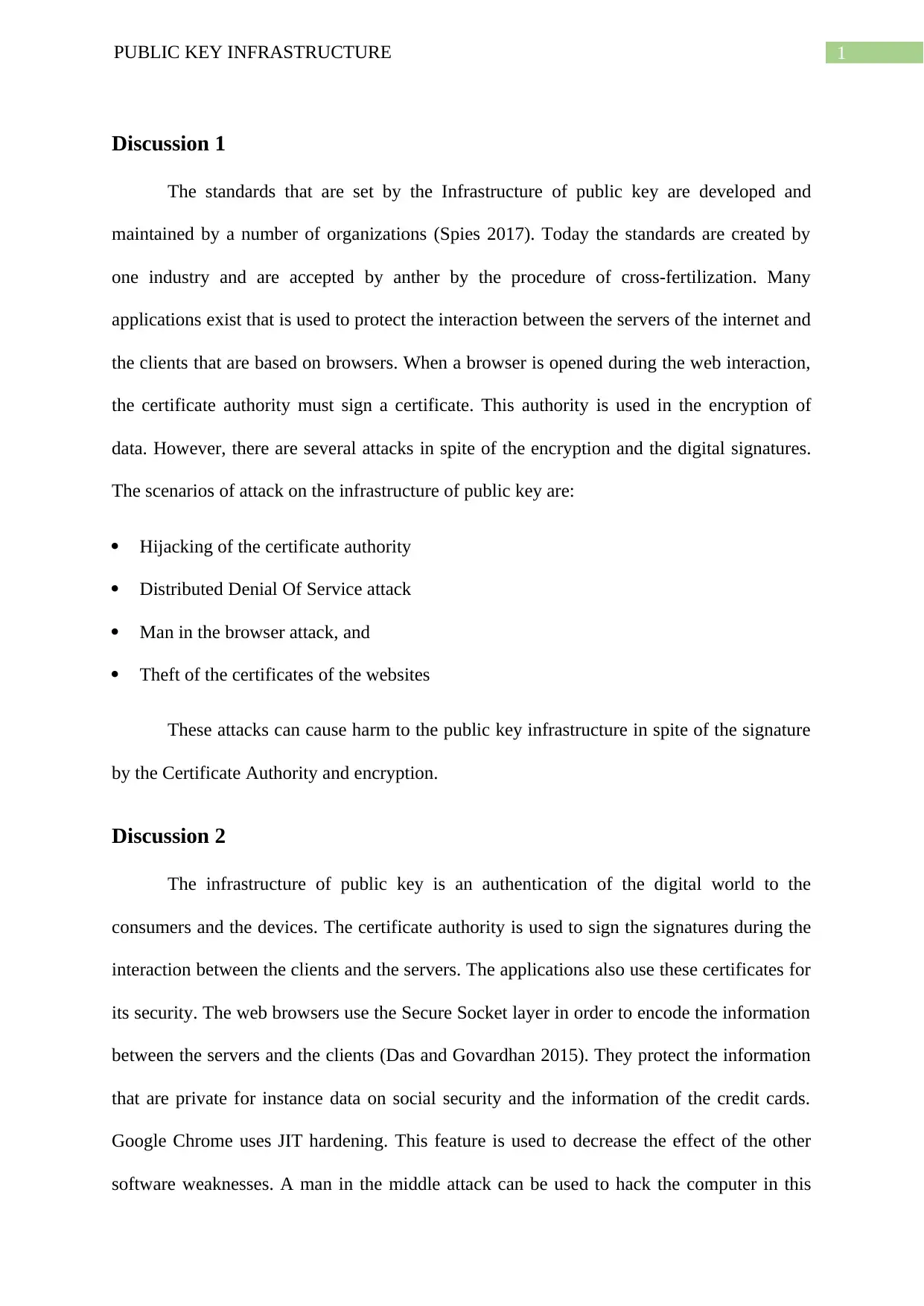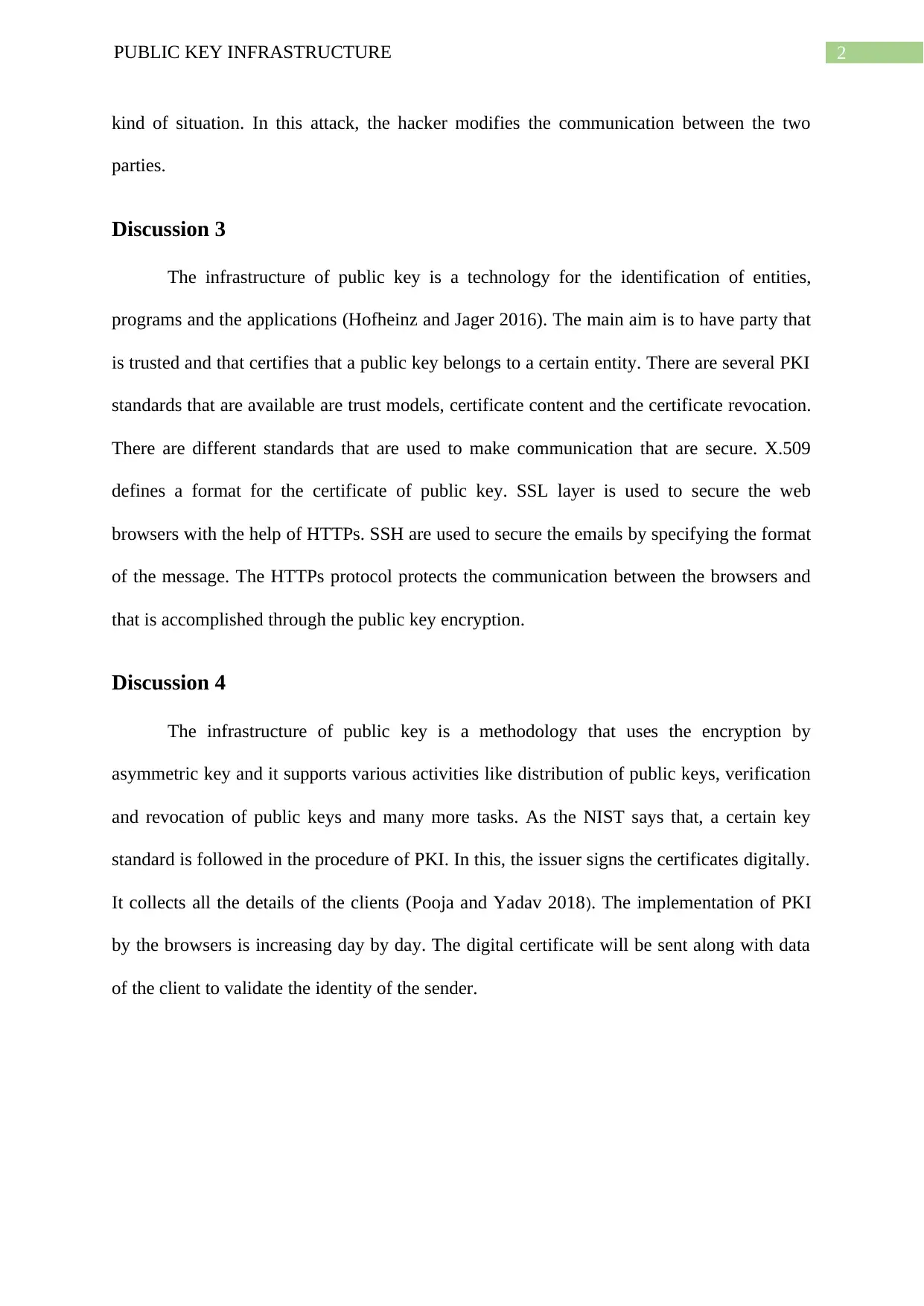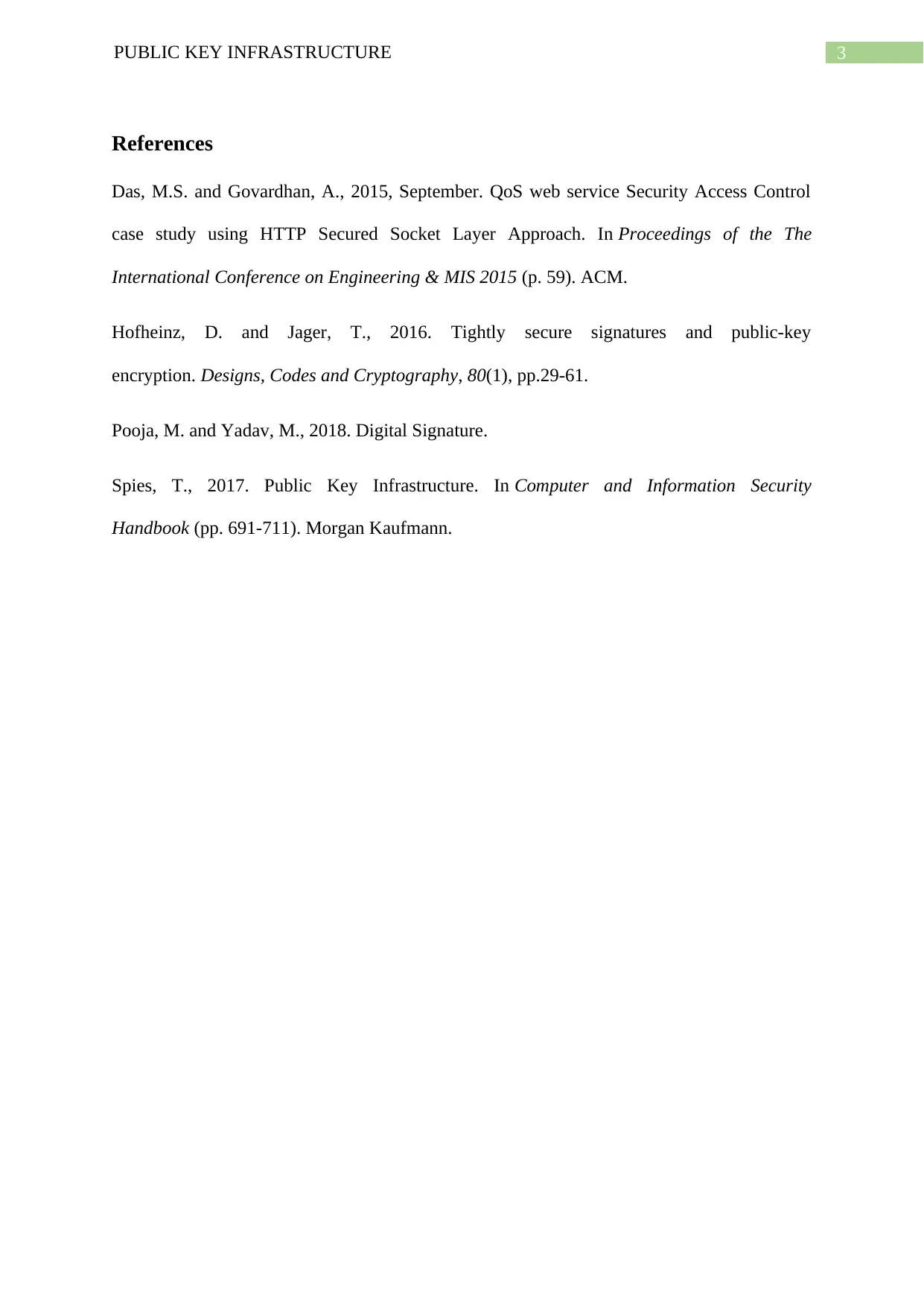Public Key Infrastructure: Security Standards, Threats, and Mitigation
VerifiedAdded on 2022/11/18
|4
|721
|101
Discussion Board Post
AI Summary
This discussion post examines Public Key Infrastructure (PKI), a crucial technology for securing digital interactions. It highlights how PKI, through certificate authorities and encryption, protects communication between servers and clients, including web browsers using protocols like SSL and HTTPS. The post discusses various security threats, such as certificate authority hijacking, DDoS attacks, man-in-the-browser attacks, and certificate theft, which can compromise PKI's effectiveness. It also explores PKI standards, including X.509, and how they are implemented to ensure secure communication and authentication. The post references academic sources to support its analysis of PKI's functionality, vulnerabilities, and the importance of its continued development in a constantly evolving threat landscape. The discussion emphasizes the role of PKI in verifying identities and securing digital transactions.
1 out of 4










![[object Object]](/_next/static/media/star-bottom.7253800d.svg)